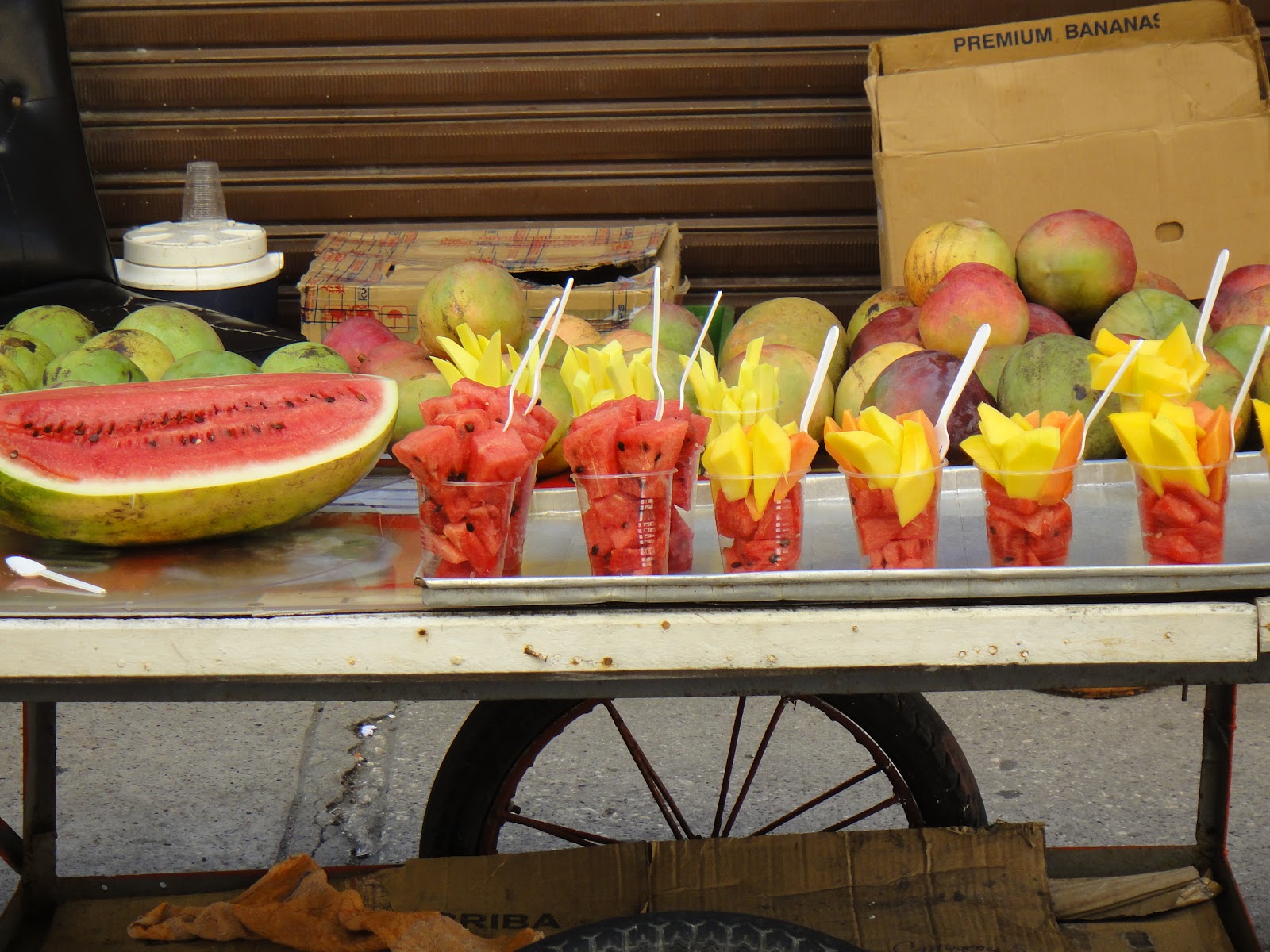People in Europe always ask: "So, is Colombian food really spicy?" - if there is one message I would like to bring across, it is that Colombian food is NOT spicy. Here are some delicious typical dishes, fruit and drinks that you should absolutely have when you visit Colombia.
Ajiaco
This is the most traditional Bogotano, if not Colombian, dish. It is a kind of soup, the basic ingredients of which are three types of potatoes (sabanera, criolla, pastusa), chicken and the herb guasca. The latter is what makes its taste unique. Ajiaco is served with sour cream, avocado, capers, ají (a mild sauce with tomato, chili, cilantro, and lime), red onions, and sweet corn. You could have it everyday, but it is typically served at Christmas or on other special occasions, when it looks like this:
 |
 |
Bandeja paisa
This typical dish from the Paisa region contains a considerable amount of ingredients, making it probably one of the heaviest specialities around: sausage, chicharrón (pork rind), red beans, rice, fried egg, platanitos (fried plantain), minced meat, avocado, arepa. Needless to say, you won't feel hungry after having a bandeja paisa!
Plátano
- or plantain in English, is a type of staple food. You can have the green ("verde") or ripe ("maduro") variety, which differ in terms of preparation and taste. The green plantain is usually mashed, then fried, and served as "patacón" - a thick savory banana chip to accompany for example meat or beans. The ripe plantain is usually diced and deep-fried, giving a delicious sweet-and-sour touch to meat or bean/legume dishes.
 |
 |
Breakfast
People here love going out for breakfast on the weekend. Apart from the famous urban places such as Crepes & Waffles, Plaza de Andrés, Brot, Abasto, or Bagatelle, to name but a few out of dozens, there are some very nice places outside the city. You usually stop there on your way out of town when going on a weekend trip. These places serve more traditional and rustic food, such as fried yuca (manioc), changua (milk soup with cheese, egg, bread, cilantro), all sorts of breads, arepas and empanadas, envueltos (sweet corn rolls), hot chocolate with cheese to dip in, fresh fruit juices, and of course - coffee.
 |
 |
 |
|
Fruit
Colombia is famous for its variety of local fruit. There are so many I can't even name, let alone recognize, them. You can find pretty much anything tropical, with flavors ranging from sweet to supersweet, sour, weird, bitter, undescribable; colors going from orange, red, yellow, green, white, pink, blue, purple, to brown; not to mention shapes: big, small, tiny, long, round, oval, with thick or thin peel, with stings, star-shaped or what have you. Funnily, our European seasonal fruit is not so good here, so refrain from buying strawberries, pears or peaches, but stick to the local champions instead, such as papaya, mandarina, mango, lulo, ganábana, zapote, naranja, feijoa, guanábana, banano, curuba, guayaba, maracuyá, toronja, piña, patilla, tomate de árbol, granadilla, mamoncillo, uchuva, chontaduro...
 |
 |
 |
 |
 |
 |
 |
 |
Mango
One of my absolute favorites, it comes in a variety of shapes and colors, such as "Tommy", "de azucar", "común" or "Yulima". Mangoes here taste very sweet and are like a dessert of its own... You can also find a sour variation called "mango biche" (unripe or green mango): the fruit is julienned and served with salt, pepper, and or vinegar - very yummy.
Fresh fruit juice
Many Colombians are used to having freshly squeezed fruit juice with their meals - you could think of it as a dessert replacement. Most juices can be prepared with either water or milk ("en agua" or "en leche") and can be made of pretty much any of the fruit described above. The most popular ones are probably mora, mandarina, and mango.
This is a traditional Bogotano cocktail, made of aguardiente, cinnamon (hence the name), and panela. A typical tourist attraction is to have a canelazo in the restaurant up on the Monserrate sanctuary, overlooking Bogotá from over 3000 meters altitude at night.
Homecooked food
In general, everyday homecooked meals consist of rice, lentils or beans, meat or chicken, sometimes accompanied by fried plantain and or a fried egg, and usually served with salad and fresh fruit juice.





Wok
When in Bogotá, there is no way around lunch or dinner at one of the Wok branches. It is probably one of the most popular restaurants and serves Colombo-Asian fusion cuisine, bringing together the Colombian Caribbean with Vietnam, China, Japan, Cambodia, Indonesia, and Thailand in a feast of curries, sushi, stir fries, spring rolls, vegetables, and desserts. The mixed pot stickers, Szechuan tofu and criollo maki (with plantain, mango, and avocado) are excellent, and so is the peppermint lemonade, the strawberry-litchi juice and the mango lassi. Don't miss out on the desserts: the passion fruit tartelette or mango with tapioca are a must!















No comments:
Post a Comment